
Pride revellers cool off in a sprinkler as they await the start of the parade in front of Warsaw city hall. Credit: David Walberg
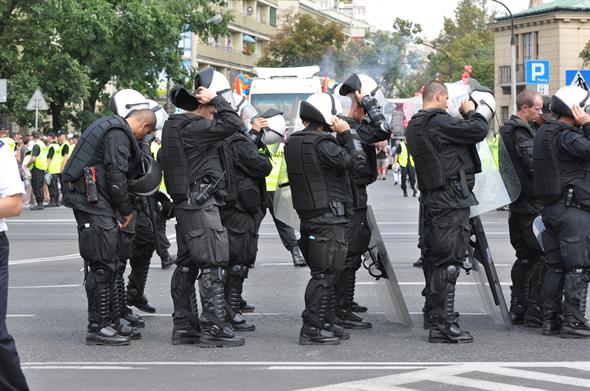
Police don riot gear as plumes of smoke reveal the presence of portable rocket launchers in a crowd of protesters. Credit: David Walberg
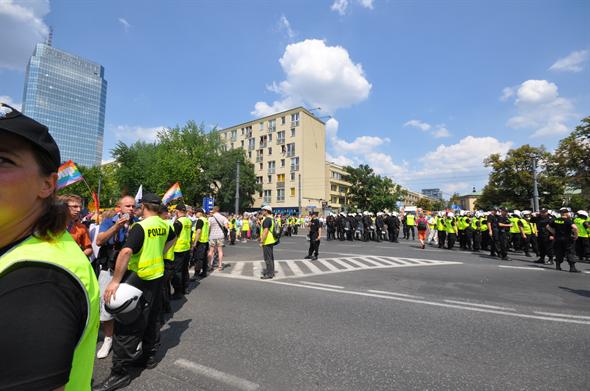
Police separate Pride marchers from protesters so that fire rockets will not reach their targets. Credit: David Walberg
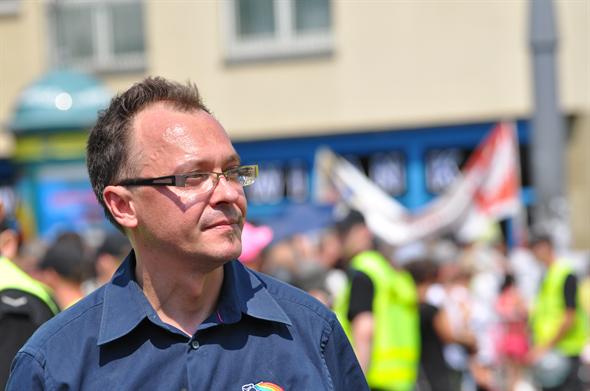
Pride organizer Tomasz Baczkowski appears tense as the parade is about to begin. Credit: David Walberg
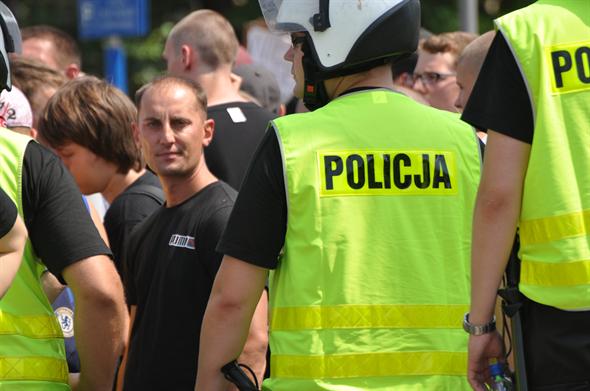
Protesters are held back by a line of police. Credit: David Walberg
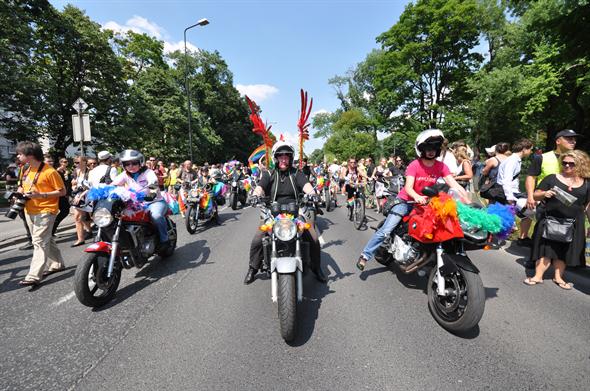
The dykes on bikes kick of Warsaw's Pride parade. Credit: David Walberg

My crew and I are hit with rotten eggs. The eggs stink and are impossible to remove in the heat. Credit: David Walberg
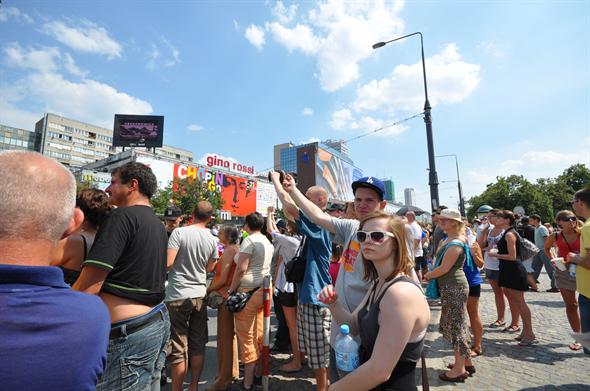
Some protesters are content to give the finger to the passing Pride parade Credit: David Walberg
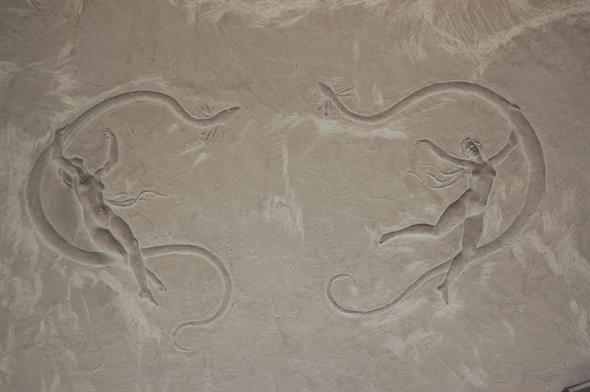
Most Pride marchers have a gay old time despite the presence of protests. Credit: David Walberg
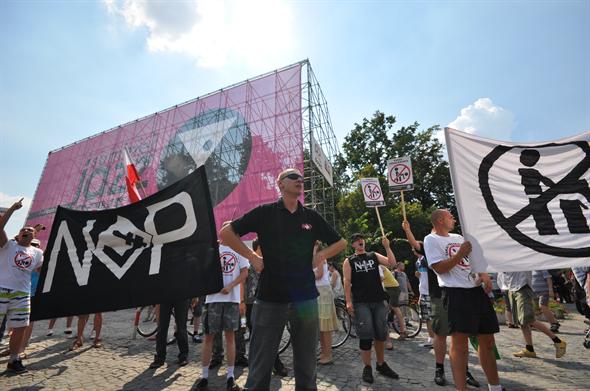
Members of the National Rebirth of Poland stage a disciplined protest, shouting and brandishing fists in unison. Credit: David Walberg
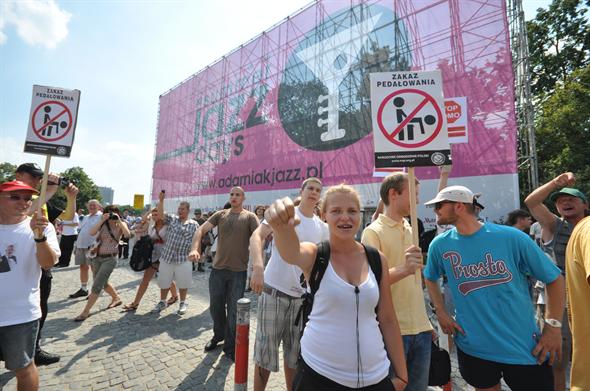
Many protesters are young. Credit: David Walberg
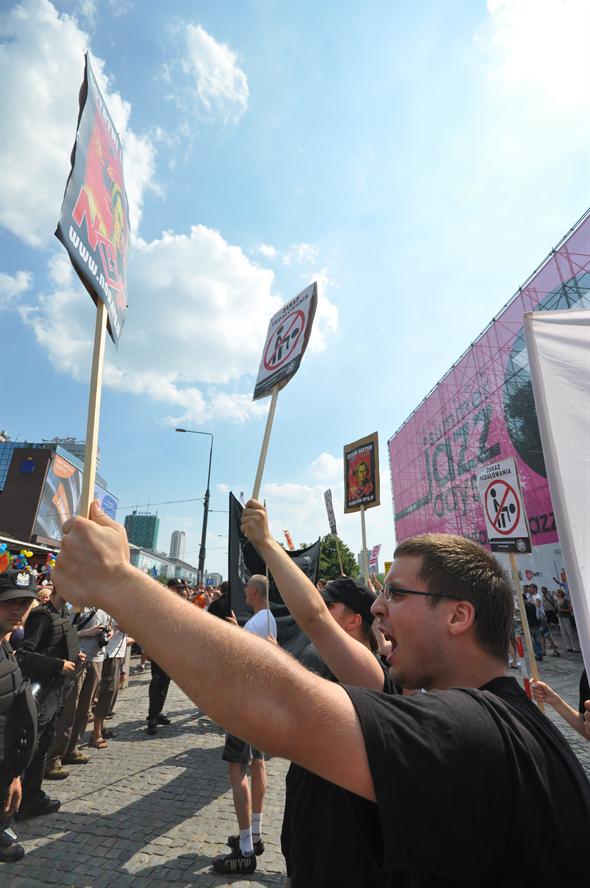
Protesters call Pride marchers faggots, paedophiles and murderers. Credit: David Walberg
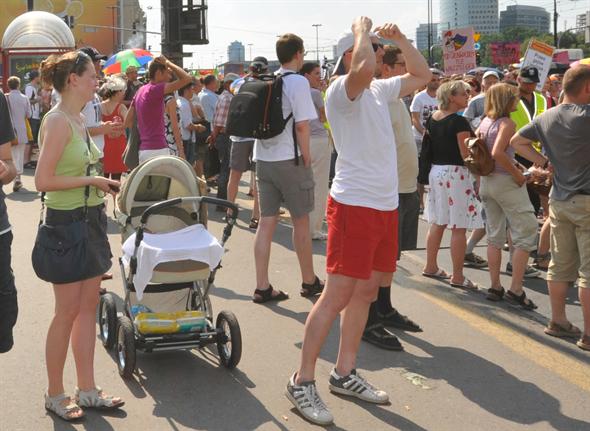
This family threw their baby's diaper into the parade. Credit: David Walberg
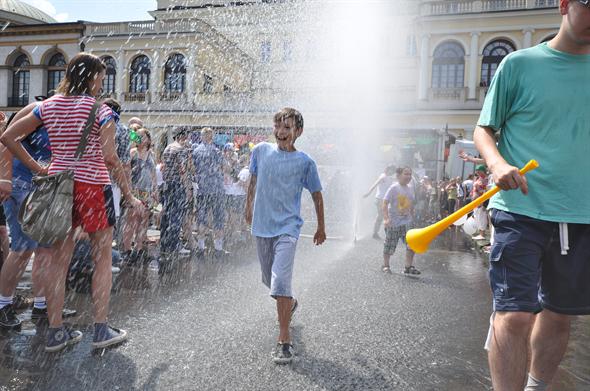
Other families and their children merrily participated in Pride celebrations. Credit: David Walberg
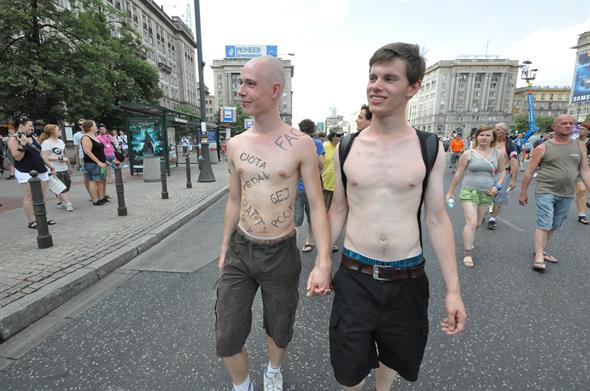
A young marcher reclaims homophobic names. Credit: David Walberg
At first glance it looked like a Pride parade anywhere. But as the dykes on bikes revved their engines, eager to kick off the Europride parade in Warsaw, a menacing group of thugs stormed the celebrations.
Police in riot gear moved quickly to contain a crowd of several hundred angry young men, surrounding them and creating a wide gap between marchers and protesters.
Smoke rose from the thugs’ camp, signalling the ignition of portable rocket launchers. As the march began after a half-hour standoff, thugs unleashed a rain of eggs, rocks and fire rockets into the parade.
The fire did not appear to hit anyone. I was travelling with a Polish television crew; we were pelted with rotten eggs that cooked on our skin in the 35 degree heat. A member of the London Gay Men’s Chorus was hit by a rock, producing much blood but no serious injury. The chorus had performed to standing ovations the previous night in the grand theatre of Stalin’s Palace of Culture and Science, a venue despised by Poles when it was the site of communist party conventions.
Two thousand police officers escorted the parade through its lengthy six-kilometre route. A Pride organizer told me it was “the most protected gay pride parade on the planet.” Police photographed rightwing youth individually and warned that any violence would be met with force.
Along the route, groups of older Catholics brandished crucifixes, and rightwing groups pumped their fists and seethed at marchers. The leader of the National Rebirth of Poland (NRP) told us the marchers were “faggots and pedophiles” and said the European Union is to blame for the emergence of homosexuals. It’s a common theme: conservative Poles like to believe that homosexuality is an imported disease incompatible with true Polishness. The NRP is a racist Christian nationalist group that advocates the imposition of moral order, racial separatism and resettlement and the destruction of Israel. Eggs were hurled for the duration of the march, but the skirmish at the start of the parade proved to be the worst of it.
Halfway along the parade route, Pride organizer Tomasz Baczkowski told me they believed the crowd to be 25,000 strong. Police estimated 8,000 marchers attended. The parade marks the largest gay rights demonstration ever in Eastern Europe. Whatever the number, the crowd was large enough that many revellers did not seem to notice protesters, and the overwhelming mood was one of defiance and celebration. For many attendees, the parade marked their first public declaration of their homosexuality. It was moving and humbling to witness their courage and their joy.
A significant number of straight families attended, with small children waving rainbow flags and dancing in water fountains. Other families were not so supportive: I saw a young mother throw her infant’s soiled diaper onto a float as her husband beamed proudly at her side. Other Catholic families spat and gave the finger as the parade passed.
Gay pride parades have become the main battleground in the fight for gay rights in Eastern Europe. Without exception, every city in the region that has mounted a Pride celebration has seen bans, violence or massive protests.
Warsaw’s first gay protest was only a dozen years ago, when three protesters stood at the base of the Sigismund’s Column, a famous monument in the city’s old town. The trio made no demands; they simply held signs announcing they were gay, their faces hidden for fear of reprisals.
Before the fall of communism in 1989, a burgeoning underground Polish gay culture was systematically destroyed by a police blackmail project, called Operation Hyacinth. The project’s “pink list” still exists in an unknown location; it comprises police files on 11,000 gay men, including intimate details of personal sexual preferences and contacts.
Warsaw’s first Pride march was held in 2001. In 2005, then-mayor Lech Kaczynski banned the parade. After the government intervened to reverse the ban, an illegal march proceeded — an astonishing feat in a country where any gathering of more than 15 people must be registered and approved by authorities. The European Court of Human Rights declared the ban a violation of human rights in 2007. Kaczynski was Poland’s president from 2005 until the spring of 2010, when he perished in a plane crash along with many members of the Polish government. Many people believe that the virulence of his homophobia crossed a line and ultimately helped ordinary Poles sympathize with homosexuals.
In addition to the parade, Europride activites included nine days of films, lectures and seminars at Pride House, a festival hub set up in a hip social-justice club called Brave New World. An outdoor exhibit about gay history was mounted on the city’s main pedestrian stroll, and the National Museum of Warsaw, the country’s most prestigious museum, presented an impressive exhibit of European homoerotic art.
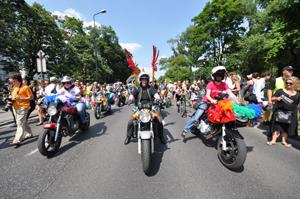
 Why you can trust Xtra
Why you can trust Xtra


